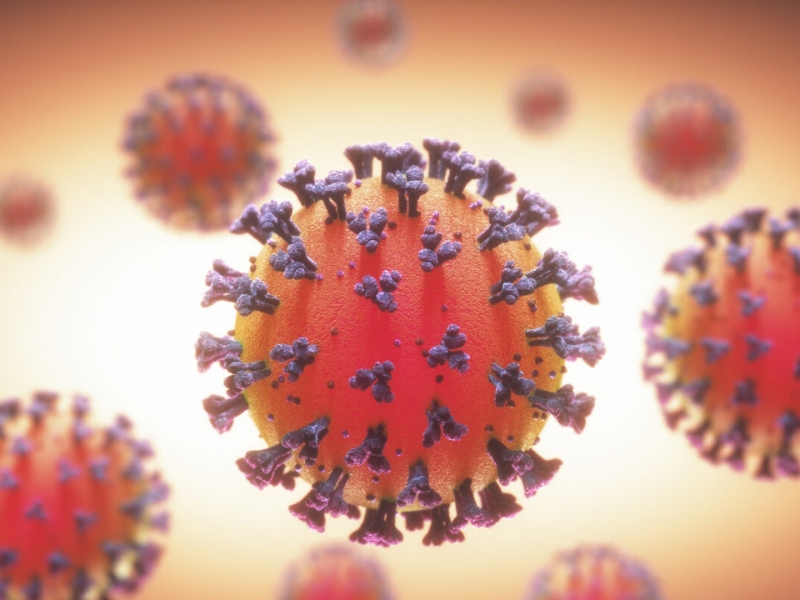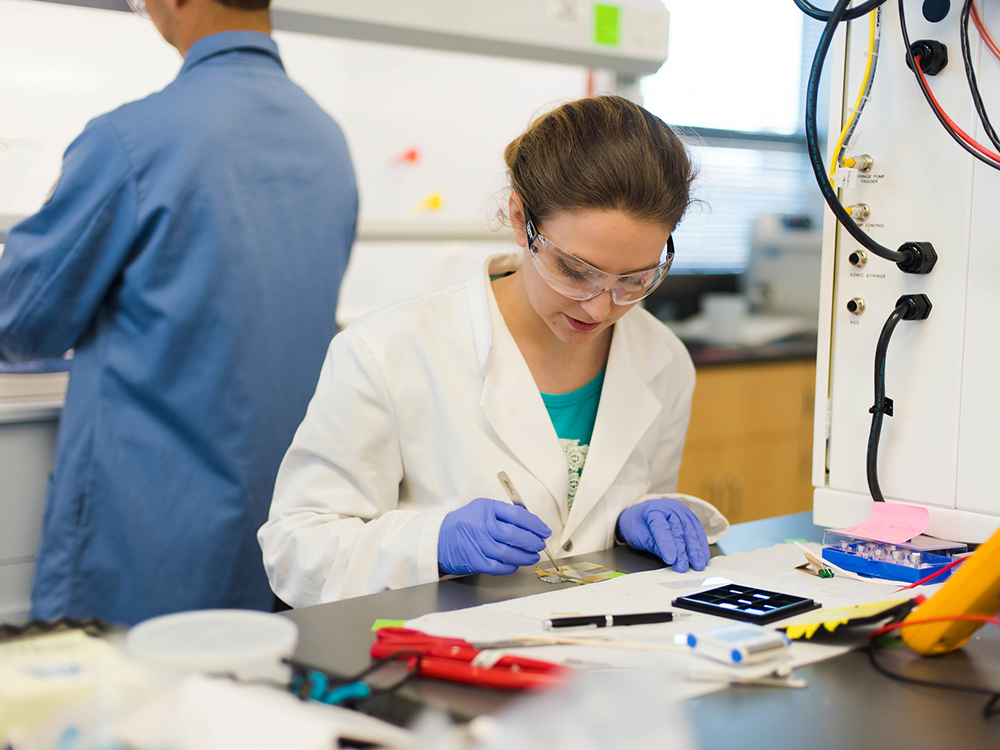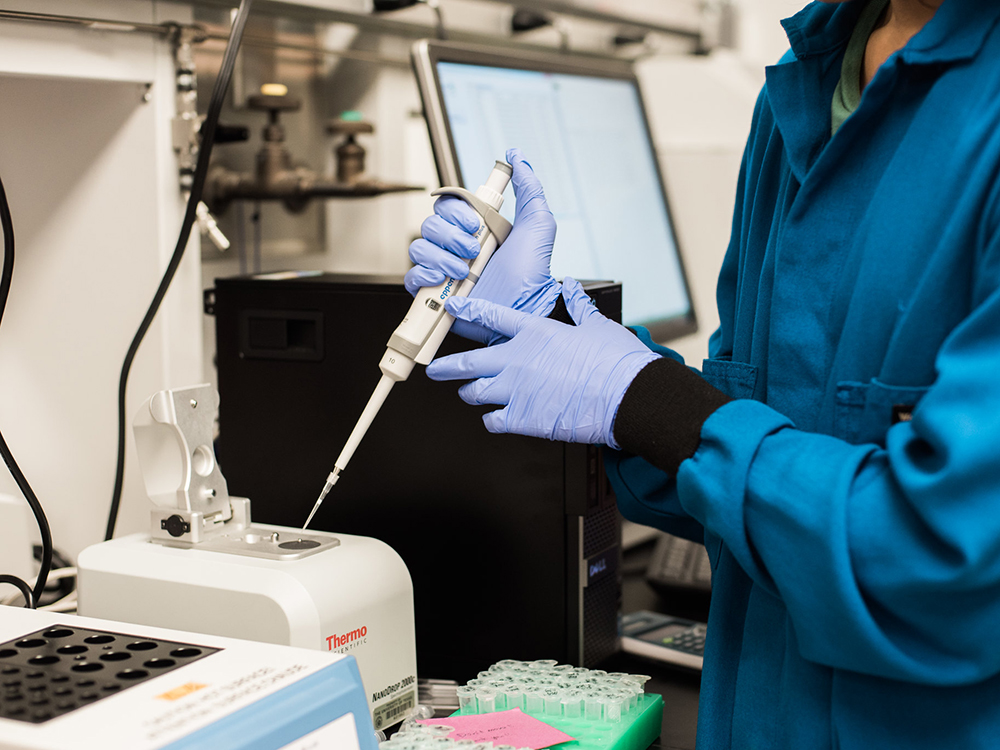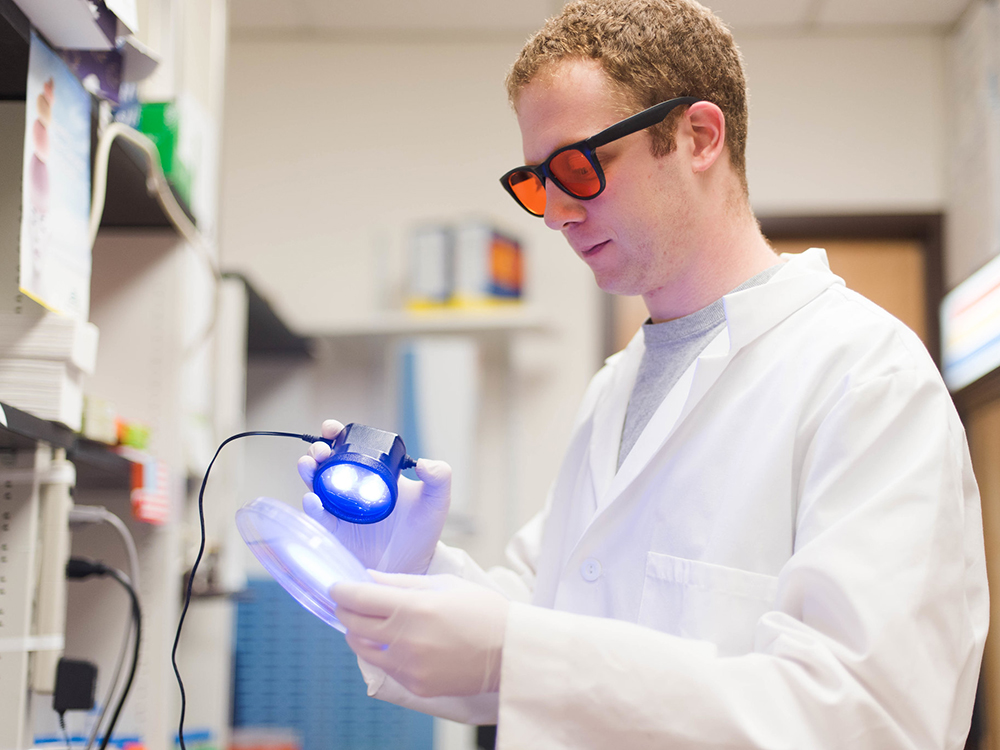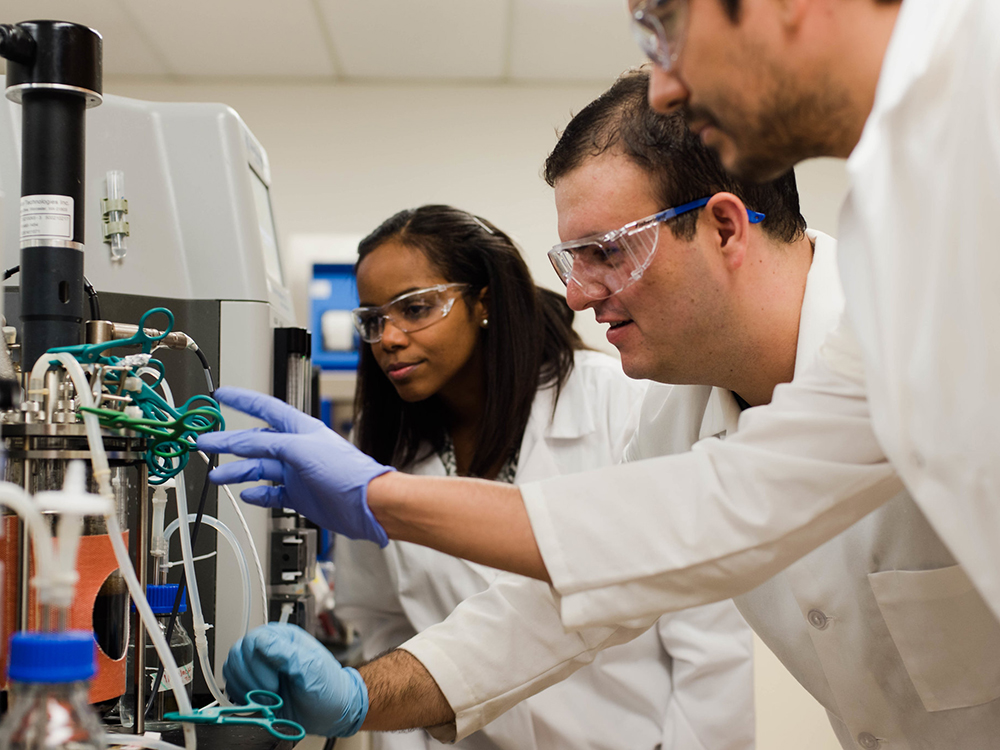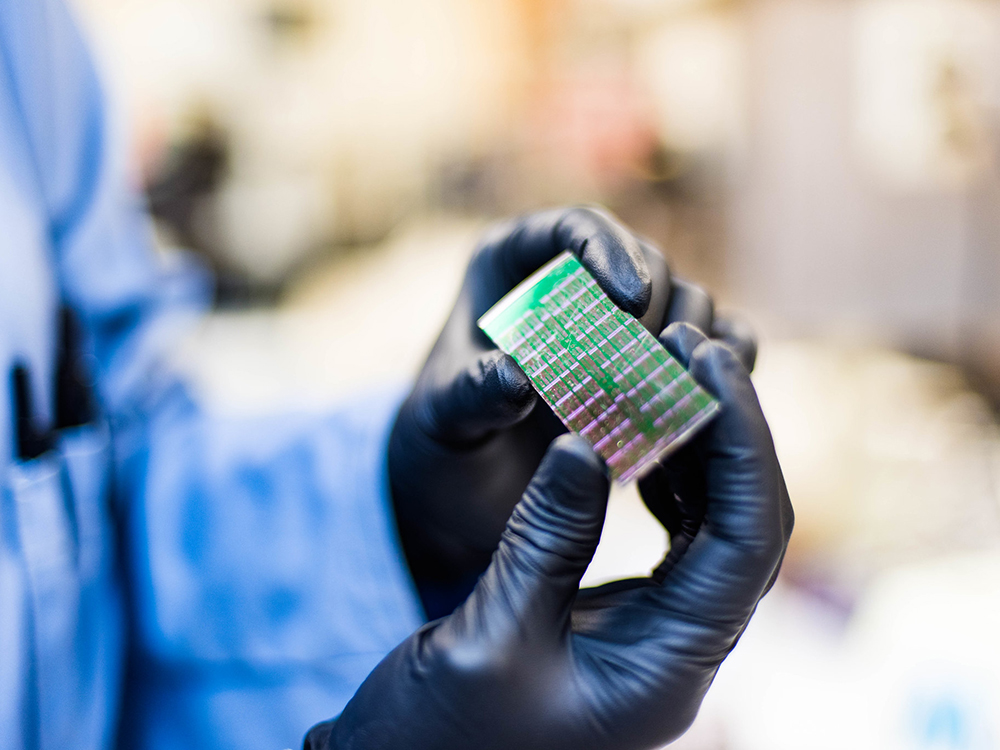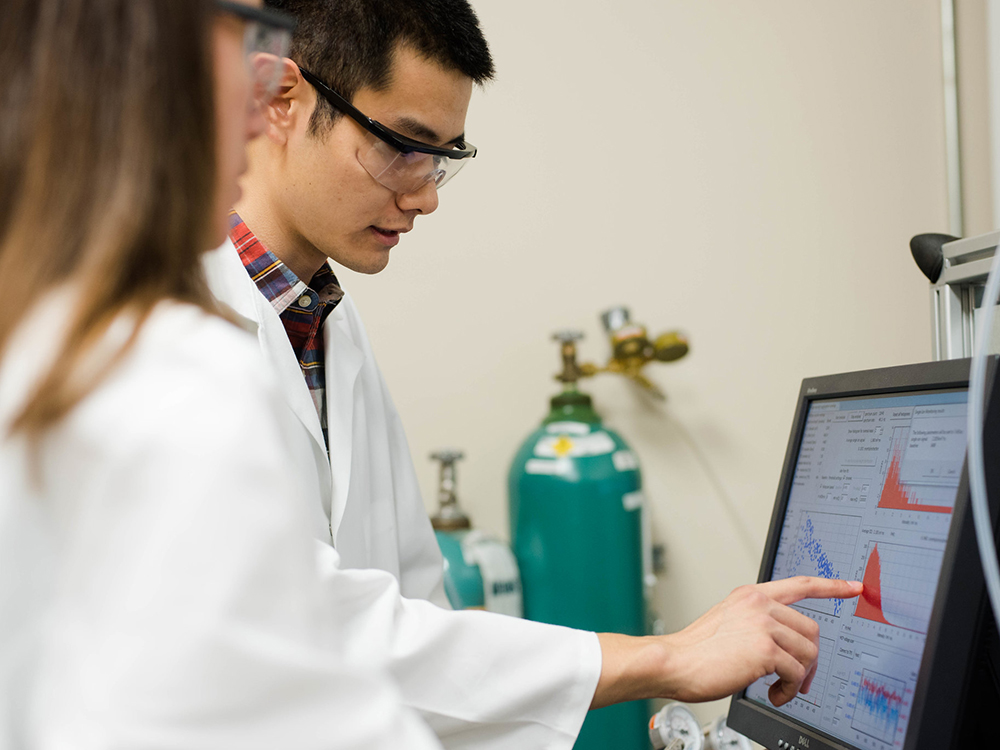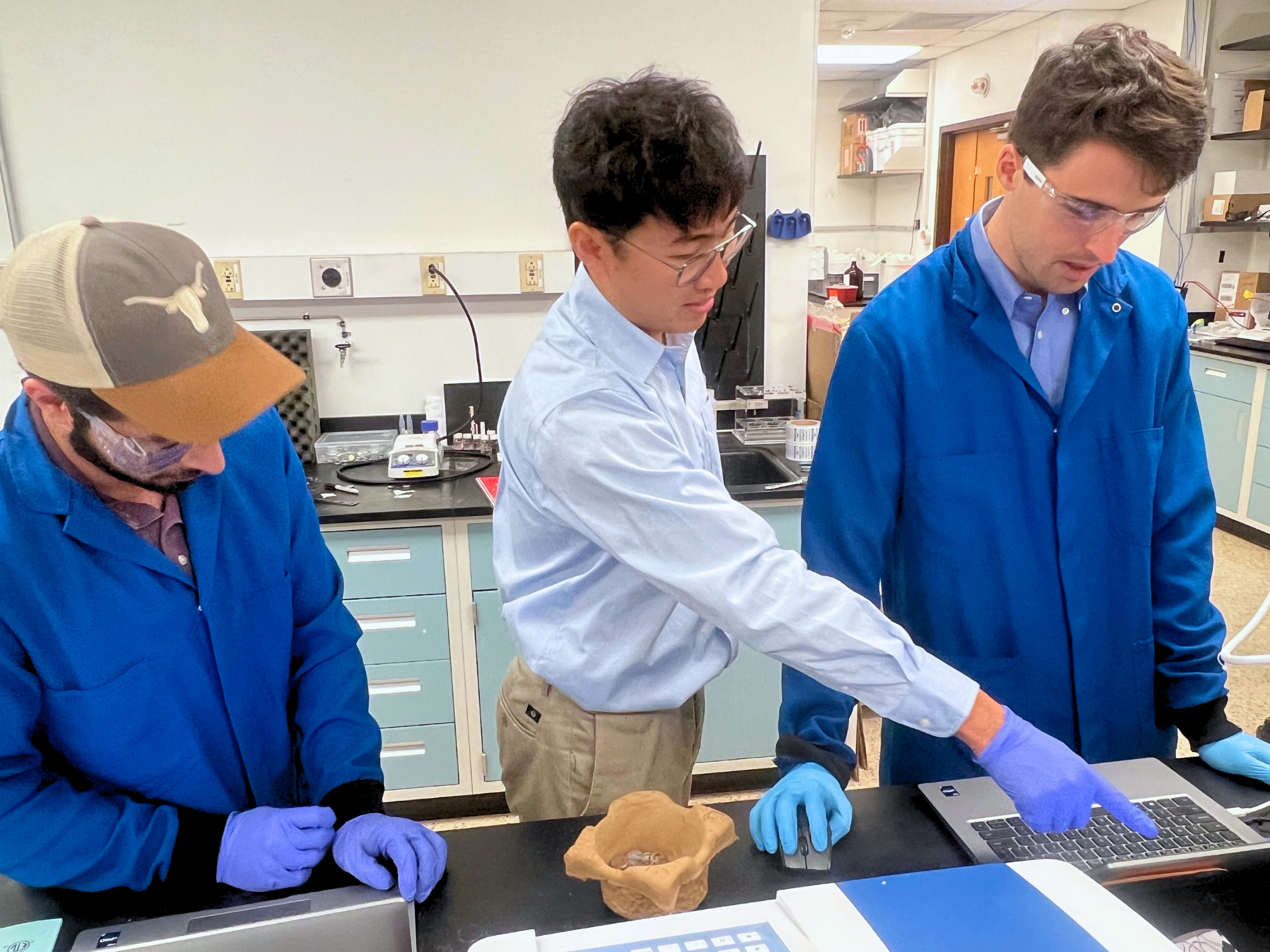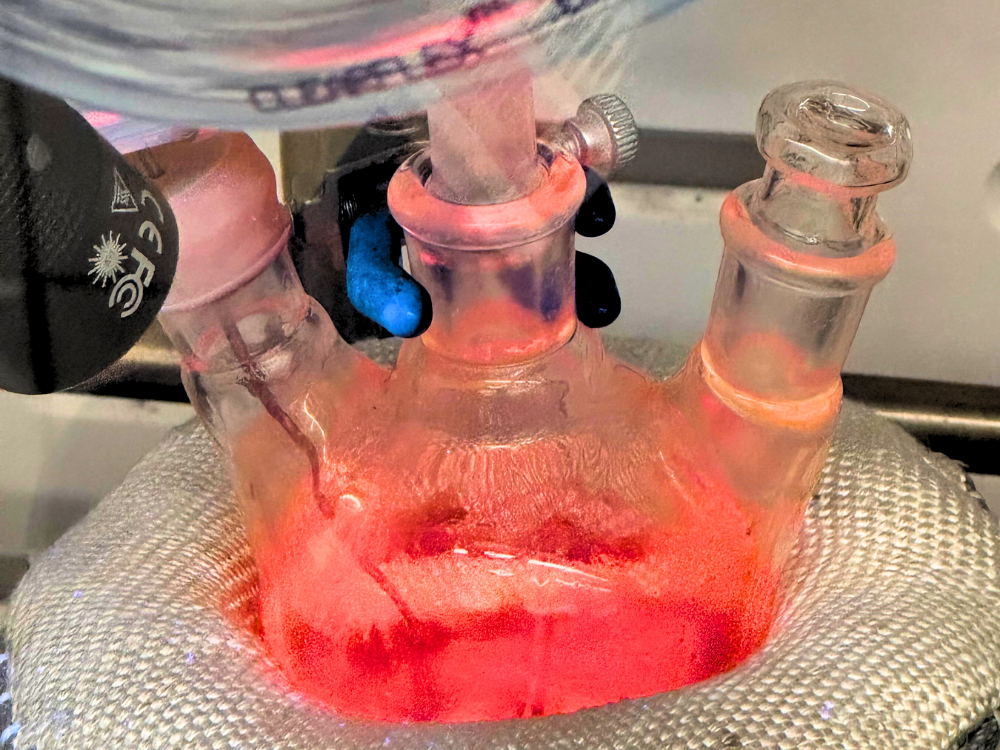Research Presentation for Prospective Graduate Students
Educational Qualifications
Ph.D., University of Illinois (1981)
B.S., University of Michigan (1977)
Research
Materials Chemistry for Advanced Functional Metal and Metal Oxide Nanoparticles
We are developing synthetic concepts to control nucleation, growth and passivation of metal and metal oxide nanoparticles in solution with ligands and polymeric stabilizers to design advanced functional materials. The goal is to achieve the proper balance of fundamental science to guide combinatorial materials science to achieved desired function for subsurface energy, electrochemical energy storage, drug delivery and bionanotechnology applications.
Nanoclusters Assembled from Nanoparticles
Organic (proteins) and inorganic (metals and metal oxides) nanoparticles may be assembled into nanoclusters with control of particle size and morphology to design a wide range of novel materials with desired properties. The size and morphology are controlled by tuning colloidal interactions and nucleation and growth pathways. Often the particles are quenched with polymeric stabilizers that may also be used to tailor interfacial properties and other types of functionality.
Nanoparticles at Liquid and Solid Interfaces
The ability to tune the interfacial properties of nanoparticles at either liquid, gas or solid interfaces, in many cases with other amphiphiles including surfactants and polymers, is of broad interest in many fields. For liquid and gas interfaces, we are investigating emulsions and foams. Interactions at solid interfaces are of interest to understand nanoparticle transport in porous media, and nanoparticle adsorption and dispersion of nanoparticles on electrocatalyst supports. The adsorption of covalent grafting of polymers to nanoparticle surfaces is of great interest for modifying the interfacial properties, and in some cases rheological behavior.
Nanotechnology in Subsurface Green Energy Production
Even modest changes in greener recovery of oil and gas will have a profound impact on the energy picture and health of the planet, including water utilization. We are developing a new field of subsurface nanotechnology for CO2 sequestration, improved oil recovery, imaging reservoirs, greener fracturing with low water utilization and treatment of marine oil spills. This interdisciplinary research is based combining materials chemistry for nanoparticle synthesis, colloid and interface science for various liquid and solid interfaces, polymer science for stabilization and rheological aspects, and nanoparticle transport. We interact closely with several petroleum engineers in these projects.
Materials Chemistry for Energy Storage: Electrocatalysis, Batteries and Supercapacitors
Highly active metal and metal oxide electrocatalysts for batteries and supercapacitors are synthesized by arrested growth precipitation methods to control composition, morphology and crystallinity. These catalysts are highly active for the oxygen reduction and oxygen evolution reactions, crucial reactions for bifunctional air electrodes in rechargeable metal-air batteries and in hydrogen production. We use insights into oxide surfaces and crystal structure to design earth-abundant catalysts that could potentially replace costly precious metals and their alloys.
Protein Stabilization and Drug Delivery with Reversible Nanoclusters
One of the grand challenges in drug delivery is for patients to self-administer biopharmaceuticals, including monoclonal antibodies, at home with subcutaneous injection. We are enabling such treatments by forming low viscosity dispersions of protein nanoclusters formed by colloidal assembly. The nanocluster assembly is reversible back to individual biologically active protein molecules. We are attempting to demonstrate that this concept is universal and may be applied to a wide range of proteins. This project combines molecular thermodynamics of protein interactions, colloid science and rheology with studies of protein stability.
Biomedical Imaging/therapy with Biodegradable Nanoclusters
Metal nanoparticles with surface plasmon resonance (SPR) in the near-infrared region (NIR) are of great interest for imaging and treatment of cancer and other diseases. We are designing Au plasmonic nanoclusters via colloidal self-assembly that biodegrade to individual primary particles small enough for kidney clearance. The surface plasmon resonance of the Au particles in the NIR region is being investigated in terms of the cluster morphology based on a variety of techniques. Upon biodegradation of polymer stabilizers, the nanoclusters reversible dissociate to primary particles small enough for clearance through the kidneys.
Awards & Honors
- Fellow of American Institute of Medical and Biological Engineers, 2013
- National Academy of Engineering, 2011
- Designated as one of the 100 Chemical Engineers of the Modern Era, Centennial of American Institute of Chemical Engineers (AIChE), 2008
- Institute Award for Excellence in Industrial Gases Technology, AIChE, 2004
- Discover Magazine Awards for Technological Innovation Finalist, 2001
- University of Texas Engineering Foundation Faculty Excellence Award, 1990, 1995
- Allan P. Colburn Award, AIChE, 1990
- Camille and Henry Dreyfus Teacher/Scholar, 1987
Selected Publications
- Dear, B.; Hung, J. J.; Truskett, T. M.; Johnston, K. P., Contrasting the Influence of Cationic Amino Acids on the Viscosity and Stability of a Highly Concentrated Monoclonal Antibody. Pharmaceutical Research 2017, 34, (1), 193-207.
- Alzobaidi, S.; Da, C.; Tran, V.; Prodanovic, M.; Johnston, K. P., High temperature ultralow water content carbon dioxide-in-water foam stabilized with viscoelastic zwitterionic surfactants. Journal of Colloid and Interface Science 2017, 488, 79-91.
- Xue, Z.; Worthen, A. J.; Da, C.; Qajar, A.; Ketchum, I. R.; Alzobaidi, S.; Huh, C.; Prodanovic, M.; Johnston, K. P., Ultradry Carbon Dioxide-in-Water Foams with Viscoelastic Aqueous Phases. Langmuir 2016, 32, (1), 28-37.
- Worthen, A. J.; Tran, V.; Cornell, K. A.; Truskett, T. M.; Johnston, K. P., Steric stabilization of nanoparticles with grafted low molecular weight ligands in highly concentrated brines including divalent ions. Soft Matter 2016, 12, 2025-2039.
- Urena-Benavides, E. E.; Lin, E. L.; Foster, E. L.; Xue, Z.; Ortiz, M. R.; Fei, Y.; Larsen, E. S.; Kmetz, A. A.; Lyon, B. A.; Moaseri, E.; Bielawski, C. W.; Pennell, K. D.; Ellison, C. J.; Johnston, K. P., Low Adsorption of Magnetite Nanoparticles with Uniform Polyelectrolyte Coatings in Concentrated Brine on Model Silica and Sandstone. Ind. Eng. Chem. Res. 2016, 55, 1522-1532.
- Stover, R. J.; Moaseri, E.; Gourisankar, S. P.; Iqbal, M.; Rahbar, N. K.; Changalvaie, B.; Truskett, T. M.; Johnston, K. P., Formation of Small Gold Nanoparticle Chains with High NIR Extinction through Bridging with Calcium Ions. Langmuir 2016, 32, 1127-1138.
- Mefford, J. T.; Rong, X.; Abakumov, A. M.; Hardin, W. G.; Dai, S.; Kolpak, A. M.; Johnston, K. P.; Stevenson, K. J., Water electrolysis on La1-xSrxCoO3-δ perovskite electrocatalysts. Nat. Commun. 2016, 7, 11053.
- Iqbal, M.; Lyon, B.; Urena-Benavides, E. E.; moaseri, E.; McFadden, K.; Ellison, C. J.; Pennell, K.; Johnston, K., High stability and low adsorption of sub-100 nm magnetite nanoparticles grafted with sulfonated copolymers on Berea sandstone in high salinity brine Energy & Fuels 2016.
- Hung, J. J.; Borwankar, A. U.; Dear, B. J.; Truskett, T. M.; Johnston, K. P., High concentration tangential flow ultrafiltration of stable monoclonal antibody solutions with low viscosities. J. Membr. Sci. 2016, 508, 113-126.
- Forslund, R. P.; Mefford, J. T.; Hardin, W. G.; Alexander, C. T.; Johnston, K. P.; Stevenson, K. J., Nanostructured LaNiO3 Perovskite Electrocatalyst for Enhanced Urea Oxidation. ACS Catal. 2016, 6, 5044-5051.
- Chen, Y.; Elhag, A. S.; Reddy, P. P.; Chen, H.; Cui, L.; Worthen, A. J.; Ma, K.; Quintanilla, H.; Noguera, J. A.; Hirasaki, G. J.; Nguyen, Q. P.; Biswal, S. L.; Johnston, K. P., Phase behavior and interfacial properties of a switchable ethoxylated amine surfactant at high temperature and effects on CO2-in-water foams. J. Colloid Interface Sci. 2016, 470, 80-91.
- Borwankar, A. U.; Dear, B. J.; Twu, A.; Hung, J. J.; Dinin, A. K.; Wilson, B. K.; Yue, J.; Maynard, J. A.; Truskett, T. M.; Johnston, K. P., Viscosity reduction of a concentrated monoclonal antibody with arginine·HCl and arginine·glutamate. Ind. Eng. Chem. Res. 2016, Ahead of Print.
- Yoon, K. Y.; Mehrmohammadi, M.; Borwankar, A.; Emelianov, S. Y.; Johnston, K. P., Synthesis of Iron Oxide Nanoclusters with Enhanced Magnetization and Their Applications in Pulsed Magneto-Motive Ultrasound Imaging. Nano 2015, 10, 1550073.
- Jadrich, R. B.; Bollinger, J. A.; Johnston, K. P.; Truskett, T. M., Origin and detection of microstructural clustering in fluids with spatial-range competitive interactions. Phys. Rev E. 2015, 91, (4).
- Worthen, A. J.; Parikh, P. S.; Chen, Y.; Bryant, S. L.; Huh, C.; Johnston, K. P., Carbon Dioxide-in-Water Foams Stabilized with a Mixture of Nanoparticles and Surfactant for CO2 Storage and Utilization Applications. Energy Procedia 2014, 63, 7929-7938.
- Stover, R. J.; Murthy, A. K.; Nie, G. D.; Gourisankar, S.; Dear, B. J.; Truskett, T. M.; Sokolov, K. V.; Johnston, K. P., Quenched Assembly of NIR-Active Gold Nanoclusters Capped with Strongly Bound Ligands by Tuning Particle Charge via pH and Salinity. J. Phys. Chem. C 2014, 118, 14291-14298.
- Mefford, J. T.; Hardin, W. G.; Dai, S.; Johnston, K. P.; Stevenson, K. J., Anion charge storage through oxygen intercalation in LaMnO3 perovskite pseudocapacitor electrodes. Nat. Mater. 2014, 13, 726-732.
- Hardin, W. G.; Mefford, J. T.; Slanac, D. A.; Patel, B. B.; Wang, X.; Dai, S.; Zhao, X.; Ruoff, R. S.; Johnston, K. P.; Stevenson, K. J., Tuning the Electrocatalytic Activity of Perovskites through Active Site Variation and Support Interactions. Chem. Mater. 2014, 26, 3368-3376.
- Foster, L. M.; Worthen, A. J.; Foster, E. L.; Dong, J.; Roach, C. M.; Metaxas, A. E.; Hardy, C. D.; Larsen, E. S.; Bollinger, J. A.; Truskett, T. M.; Bielawski, C. W.; Johnston, K. P., High Interfacial Activity of Polymers “Grafted through” Functionalized Iron Oxide Nanoparticle Clusters. Langmuir 2014, 30, 10188-10196.
- Foster, E. L.; Xue, Z.; Roach, C. M.; Larsen, E. S.; Bielawski, C. W.; Johnston, K. P., Iron Oxide Nanoparticles Grafted with Sulfonated and Zwitterionic Polymers: High Stability and Low Adsorption in Extreme Aqueous Environments. ACS Macro Lett. 2014, 3, 867-871.


